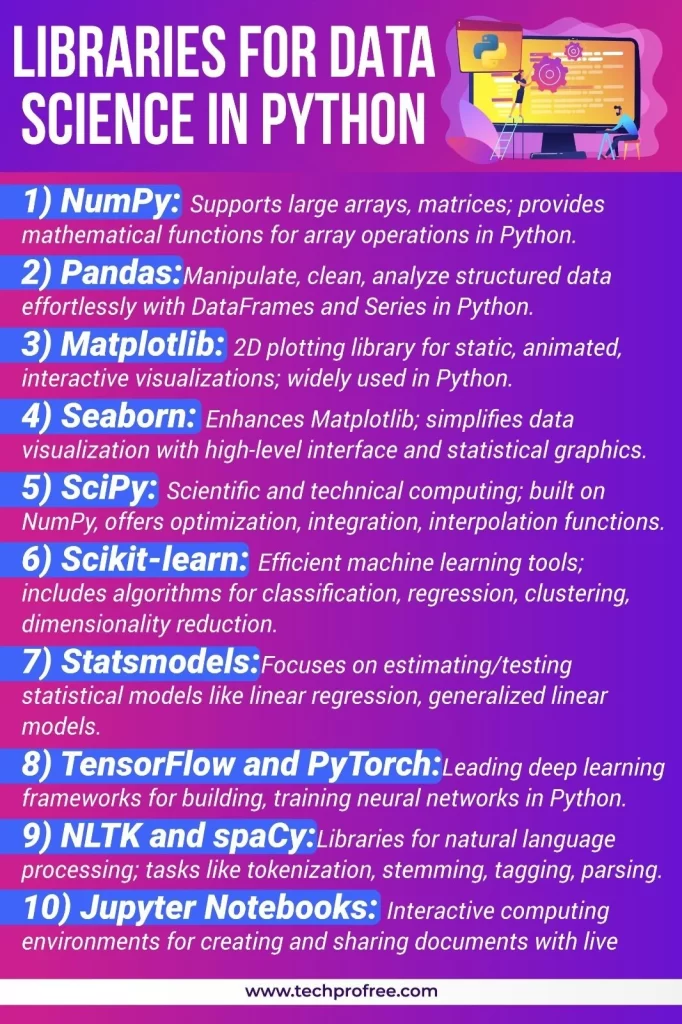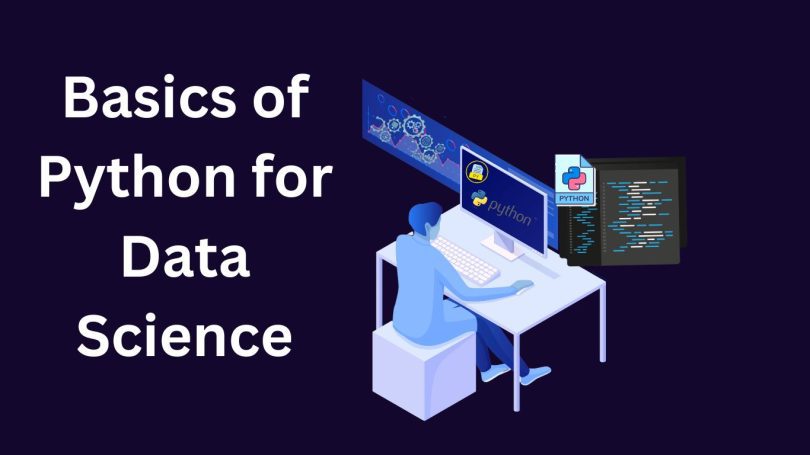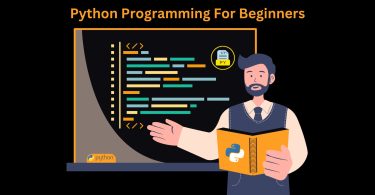in Current Era Most use Python for data science . Python, which is well known for its adoption by the masses due to its user-friendliness, becomes a good point of entry into data science. The growing needs of professionals in data science provide an attractive opportunity for the people planning to work in this domain. In this blog, we will discuss the basics of Python for data science and uncover its multiple different aspects.
What is Python?
Python, a popular scripting language characterized by its “interpretive nature”, “object-oriented”, as well as “high-level semantics”, is a multi-purpose programming language tool that is used in a plethora of applications.
Its rich built-in functionalities including “dynamic typing”, “dynamic binding” and “high-level data structures” make it especially suitable for scripting and integration purposes as well as “Rapid Application Development” (RAD).
Python’s uniqueness in this field which is its keep-it-simple nature is made easier to understand by its readable syntax and clearly sets it apart from other programming languages. However, the less complex a program syntax is, the lesser the cost of program maintenance which has the advantage of enabling programmers to understand and change the codes easily. In addition, Python eases the modularity and reusability of programs by its provision of modules and packages. The fact that the “python interpreter” is easily accessible and comes with a “standard library”, which is available in both “source” and “binary” versions across major platforms without cost, is the reason for its popularity and usability.
Why do software developers choose Python?
It is that Python fosters increased productivity on the part of programmers, thus this language enjoys popularity among developers.
What is Data Science?
Data science is being created as a multifaceted discipline that combines “mathematical”, “statistical”, “programming”, “advanced analytics”, “AI”, and “machine learning” skills.
Data science, which thrives on subject matter expertise, intends to uncover the hidden and actionable insights of an organization’s data resources. These analytics are very important as they give crucial information that assists in the decision-making process, strategic planning and organizational development.
Python in Data Science
In the current landscape, the data is available, however, the information that is hidden inside it is yet to be extracted. Data science, an area of study that focuses on the revelation of the insights, is a key discipline in many industry sectors like “healthcare”, “finance”, “marketing”, and “social media” that are not limited to these only. For those intrigued by the prospect of leveraging data to address real-world challenges, python stands as an accessible companion facilitating this intriguing journey.
Reasons for Choosing Python in Data Science
Building up the domination of Python within the data science domain is on purpose. The following elucidates why Python stands as an optimal choice for aspiring data scientists:
Accessibility to Novices
Much of this user-friendliness lies in its straightforward syntax and easily understandable code structure. The gentle learning curve keeps a practitioner from being overpowered by syntactic complexities while conceptual understanding is the focus.
Robust Library Ecosystem
Python is a multi-purpose toolkit in the well-stocked toolbox of data scientists. Given an abundant array of libraries like “NumPy” for numerical calculus, pandas covering data manipulation, “Matplotlib” for visualization and “Scikit-learn” dedicated to applying machine learning methodology, Python allows data scientists to solve a broad spectrum of data-related issues.
Interoperability across Platforms
Operating system neutrality of python facilitates code running on “Windows”, “macOS” and “Linux” making collaboration and code execution unrestricted by platform, hence avoiding platform-specific restrictions.
Vibrant Community Engagement
The living character of the Python-based data science community is embodied by the fact that it is built on a foundation of cooperation and exchange of knowledge.
Initiating Python Proficiency
To commence the journey, a concise roadmap for establishing the data science environment is delineated as follows:
Selection of Tooling
The available alternatives comprise of standalone Python installation for better customization but one will have to install the data science libraries by own, or accept “Anaconda Distribution” that is aimed at facilitating Python adoption and providing a one-stop-shop solution with pre-installed data science libraries. Furthermore, the use of “Jupyter Notebook” which has been recommended is suggested, it is an interactive coding environment that is suitable for experiments.
Mastery of Fundamentals
Advanced concepts including “variable declaration”, “data types” including “numerical” (“integers”, “floats”) and “textual” (“strings”) representations, operators for carrying out numerical and logical operations, control flow mechanisms such as loops and conditional statements, and modularization of code through functions, are necessary for programming proficiency.
Essential Data Structures
Python offers a repertoire of data structuring mechanisms inclusive of:
Lists: Serialized sequences with the ability to support heterogeneous data types.
Tuples: Immutable lists adapted to immutable data representations.
Dictionaries: Key-value pairings that make it easy to keep up with the different types of data.

Harnessing Data Analysis with Python Libraries
The harnessing of Python libraries is instrumental in augmenting analytical capabilities:
NumPy
It simplifies the management of multi-dimensional arrays which is vital in numerical procedures.
pandas
Supports the manipulation and the analysis of tabular data structures in the form of spreadsheets.
Matplotlib
Capable of providing a range of graphical representations for data visualization.
Scikit-learn
Equips the practitioners with a toolkit of machine learning algorithms for classification, regression and other areas.
The continuous learning culture is fostered by more exploration opportunities which include “data cleansing” and “wrangling” techniques that work with messy and heterogeneous data attributes in addition.
to delving into sophisticated statistical modeling and machine learning.
Conclusion
This article was an elaborate introduction to the captivating world of data science and how Python enables you to unleash its true power. We talked about the user-friendly nature of Python, the huge libra
y ecosystem it has, cross-platform compatibility and the thriving community around it, Thereby proving that it is a perfect fit for a data science aspirant. We did not only touch on the theoretical aspects but also the practical side of it like setting up your environment, mastering the basics, and using the libraries like NumPy, pandas, and Scikit-learn. Keep in mind that this is just a start! Your data science trip will very much be enriched as you continue to learn. Learning data cleaning and wrangling techniques, data-driven statistical modeling and ML algorithms, and being part of the active data science community. Python is your trustworthy companion on this journey. It enables you to convert the data into actionable intelligence and to shape the future with data-driven decision-making.




Leave a Comment